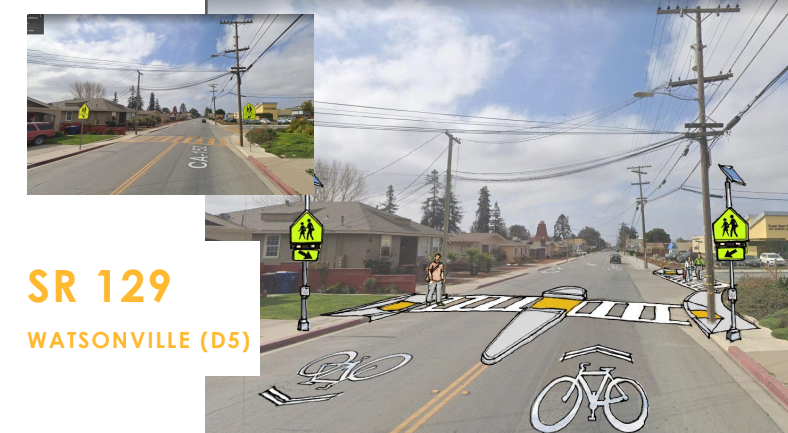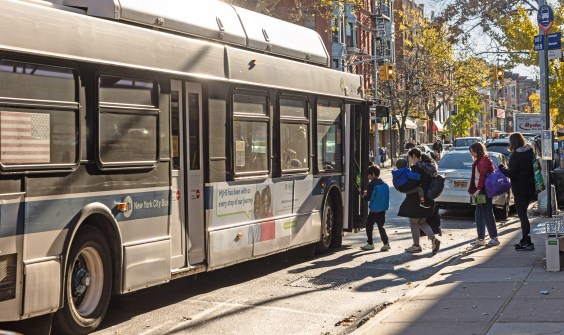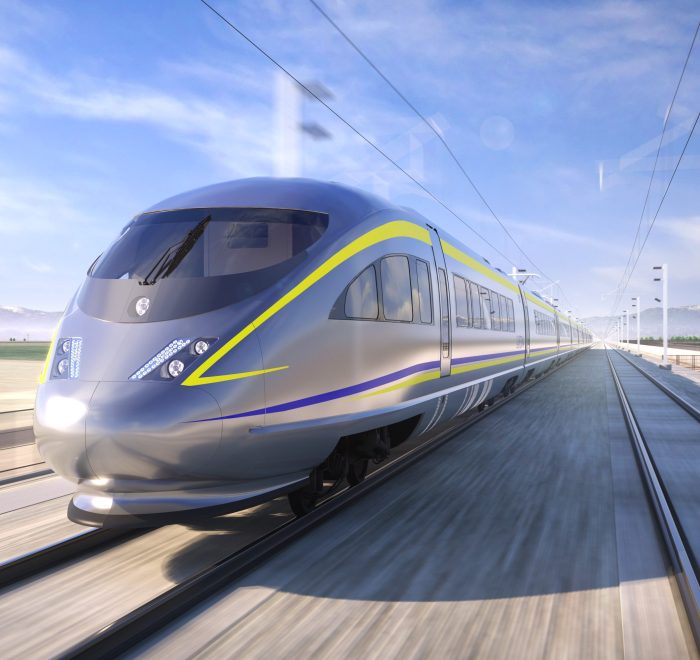Update on Caltrans Complete Streets Reservation
3:41 PM PDT on September 14, 2021

Complete Streets project in Watsonville, CA. Image: Caltrans
Note: GJEL Accident Attorneys regularly sponsors coverage on Streetsblog San Francisco and Streetsblog California. Unless noted in the story, GJEL Accident Attorneys is not consulted for the content or editorial direction of the sponsored content.
At the most recent California Transportation Commission meeting, Caltrans staff presented a brief update on the "Complete Streets Reservation," a $100 million set aside of funding within the existing State Highway Operation and Protection Program (SHOPP).
This "reservation" was an immediate response to S.B. 127, a bill that made it all the way to Governor Newsom's desk two years ago before he vetoed it - about which Streetsblog cried foul. But Newsom claimed he cared about the bill's aim, which was to ensure that state transportation funding is invested to make streets safe and convenient for all users, rather than strictly for car drivers.
This $100m "reservation" was set up to begin planning and funding projects that were already in the works, before slow-moving plans and guidelines could be updated. Then, going forward, all new Caltrans projects would include complete streets considerations.
That's right: All new Caltrans projects will include complete streets considerations.
The quality of those considerations will likely be something to argue about. Specifically, what counts as a "complete streets" element will be a key definition. The 2021 State Highway System Management Plan (SHSMP), which includes Caltrans' first stab at guidelines on doing that, is currently in draft form, and can be found here.
But in the meantime Caltrans' Complete Streets Program Manager Susan Lindsay told the CTC that Caltrans has already identified 34 projects across its twelve districts that qualify for the funding, using criteria that it developed with input from its Walk and Bike Technical Advisory Committee.
Thirty-one of these are Caltrans projects that had already been approved in the SHOPP and will add complete streets elements with the receipt of this funding. Two others are local projects that will use the reservation funding to complete work inside Caltrans-owned right of way: a bike and pedestrian safety project on 13th Street in San Francisco, where it crosses under US 101 (in Caltrans District 4), and a separated bike and pedestrian path and crossing improvements on State Route 162 in Covelo (Caltrans District 1). The 34th project will make bike and pedestrian improvements along Eureka's main street, Broadway - also in District 1.
Lindsay offered these statistics: the 34 projects include twelve separated, all-ages bike facilities; sixteen will include new sidewalks closing critical gaps in pedestrian access; 26 are along a city's main street; and two include new road diet elements.
A list of the 34 projects is included below.
Lindsay spotlighted a couple of examples, including the Covelo project, which will build a multi-use path adjacent to State Route 162. That project, she said, was identified as a priority in regional and local plans.
The Broadway project in Eureka will add protected bike lanes and pedestrian crossings along a main street that currently has no bike facilities and few pedestrian crossings. This had been identified as a high priority for the region.
In Watsonville, the local district expanded the scope of an existing project on State Route 129 to include a continuous bike and pedestrian network connecting it to State Route 152. The city experiences high injuries and has many low income residents, said Lindsay, and the plan for the network included outreach at public events to assess the needs and desires of residents.
Executive Director Mitch Weiss questioned whether some of these facilities were good enough, specifically one where the shoulder of a road was being widened to make room for people. "As a cyclist and pedestrian, I appreciate shoulders," he said, "but a shoulder widening kinda seems like you're phoning it in as a complete streets project."
Lindsay acknowledged the point. "There are a lot of locations where we don't own the right of way, or we have environmental constrains. Caltrans has to work with a significant amount of mileage where shoulder widening is the only feasible facility," she said, adding that future planning will focus on finding the best solutions in those cases. "Unfortunately, shoulder widening may be the best we can do right now."
She pointed out that the SHSMP purposely did not include performance targets for Class III bike lanes - which are nothing more than signed routes - "because we don't really want to encourage building them even as a minimum facility," she said. "We're pushing performance targets for other types of bikeways, but there will be times when [a Class III is] the only feasible project."
"I understand the constraint," Weiss responded. "But should that really be considered a complete streets project? Is that the intent of the reservation? Yes, it should make it somewhat safer," he said, but falls short of fully accommodating bike riders and people on foot.
This update to the commission is one step in Caltrans modernizing its planning processes. Starting with the 2021 SHSMP, "complete streets" will be measured as one of many state-managed "assets" on its highways. In addition, Caltrans recently hired Susan Lindsay to oversee complete streets delivery.
Active Transportation Plans are also being developed in all twelve districts, with District 4 being the first to complete its plan. These in turn "will help inform performance targets and project development for next (2023) SHSMP," according to Lindsay.
There is also a plan for funding. The 2021 SHSMP calls for $205 million to "fix existing assets" - which is limited to making sure pavement is in good repair and painted lines are not worn away. It also calls for about $1.4 billion for building new facilities, which would require more planning to choose the most appropriate facility. This is the pot of funding that would be used to replace Class III routes, for example, with more robust protection.
Projects below are listed by Caltrans district, county, and state highway route number.
- D1, Humboldt, Route 101: Bike lanes, curb ramps, sidewalk, transit stops, pedestrian refuge islands, flashing beacons. $12,500,000
- D1, Mendocino, Route 162: Class 1 multi-purpose trail. $2,011,000
- D2, Lassen, Route 139: Shoulder widening for multimodal use. $1,100,000
- D2, Plumas, Route 89: Separated Class 1 bike path. $2,550,000
- D2, Shasta, Route 299: New separated Class 1 bike path, rehabilitate/widen Class 1 bike path, ramp modification. $4,300,000
- D3, Yuba, Route 65: Class 1 bike path and enhanced crosswalk. $820,000
- D3, Sacramento, Route 51: Class 1 bike and pedestrian path. $4,300,000
- D4, Napa, Route 121: Sidewalk, Class 2 and Class 4 bikeways, curb ramps, transit islands, bicycle detection, green bikeway markings, and high visibility crosswalks. $3,855,000
- D4, Santa Clara, Route 82: Class 2 bike lane, new pedestrian crossings. $3,180,000
- D4, San Francisco, Route 101: Curb ramps, sidewalks, crosswalks, bulb-outs, safety zone markings, Accessible Pedestrian Signals (APS) and traffic signals. $2,115,000
- D4, Solano, Route 29: Sidewalks, Class 2 and Class 4 bikeways, curb extensions, LED light fixtures, and green bikeway markings. $3,350,000
- D4, Marin, Route 131: Class 2 bike lane and Class 4 separated bikeway. $3,600,000
- D5, San Luis Obispo, Route 1: Shoulder widening and buffered Class 2 bike lane. $2,831,000
- D5, Santa Barbara, Route 1: Sidewalk, bike lanes, flashing beacons, transit stop, crosswalks. $1,902,000
- D5, Santa Cruz, Route 129: Class 2 and 3 bike lanes, sidewalk, new crosswalks, high-visibility striping, flashing beacons. $2,042,000
- D6, Fremont, Route 33: Crosswalks, sidewalk, curb extensions, flashing beacons, curb ramps, Class 2 bike lanes, high-visibility striping and green bikeway markings. $2,450,000
- D6, Kern, Route 184: Sidewalk gap closure, bus turn outs, pedestrian hybrid beacon. $2,100,000
- D6, Madera, Route 145: Road diet including bikeways, bike parking, transit stops, sidewalk, and ADA ramps $4,685,000
- D7, LA, Route 1: Sidewalk gap closure, pedestrian beacons, striping/markings. $606,000
- D7, LA, Route 2: Bus Only/Bike Lane, pedestrian beacons, striping, markings, new signal. $2,370,000
- D7, LA, Route 213: Class 2 bike lane, and 3 bike routes, enhanced crosswalks, sidewalk gap closure. $1,529,000
- D8, San Bernardino, Route 66: Sidewalk gap closure. $1,708,000
- D8, San Bernardino, Route 18: Sidewalk, crosswalks, bike lanes, and flashing beacons. $3,275,000
- D9, Inyo, Route 395: Sidewalk gap closure. $2,649,000
- D9, Inyo, Route 395: Class 1 bike path, new crosswalk and pedestrian beacons. $4,895,000
- D10, Calaveras, Route 49: Bike lane/sidewalk gap closure, green paint, crossing islands. $1,286,000
- D10, San Joaquin, Route 88: Class 2 bike lane and 3 bike route, enhanced crosswalks, sidewalk gap closure. $1,940,000
- D11, San Diego, Route 805: Class 1 bike path and new pedestrian bridge. $3,000,000
- D11, San Diego, Route 5: Bike path (PS&E supplemental). $650,000
- D12, Orange, Route 1: Curb ramps, Class 2 bikeways, crosswalks, and sidewalk. $2,200,000
- D12, Orange, Route 55: Bike lane, crosswalks, sidewalk, bike loops, signs, signals. $1,808,000
Streetsblog California editor Melanie Curry has been thinking about transportation, and how to improve conditions for bicyclists, ever since commuting to school by bike long before bike lanes were a thing. She was Managing Editor at the East Bay Express, editor of Access Magazine for the University of California Transportation Center, and earned her Masters in City Planning from UC Berkeley.
Stay in touch
Sign up for our free newsletter
More from Streetsblog California
Sudden State Funding Freeze Leaves Transit Agencies Hanging
Transit agencies were caught off guard by a 60-day funding freeze announced on the day they were expecting the allocations
Friday Video: How to Make Places Safe For Non-Drivers After Dark
A top Paris pedestrian planner, a leading GIS professional, and Streetsblog's own Kea Wilson weigh in on the roots of America's nighttime road safety crisis, and the strategies that can help end it.
Friday’s Headlines
Is your city safe for bicycling? Progress on CA high-speed rail; E-bikes are game changers; More
LAPD Was Crossing Against Red Light in Crash that Killed Pedestrian and Injured Six in Hollywood
The department says the officers had turned on their lights and sirens just before crossing. Their reasons for doing so remain unknown.
Wider Highways Don’t Solve Congestion. So Why Are We Still Knocking Down Homes for Them?
Highway expansion projects certainly qualify as projects for public use. But do they deliver a public benefit that justifies taking private property?




